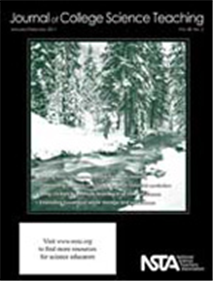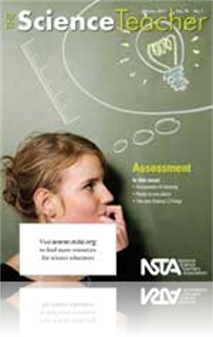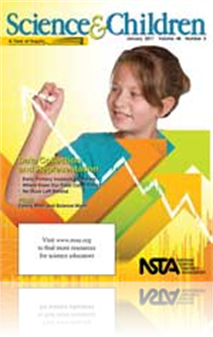All Resources
Journal Article
Clickers are a popular tool in large science classes. The authors find that clickers can also be used in small undergraduate- and graduate-level science classes, and to some extent also in laboratory classes, to achieve the same purposes as in large ...
Journal Article
SimRiver: Environmental Modeling Software for the Science Classroom
While students may acknowledge the impact that land use and development have on our environment, they do not necessarily understand the relationship between human activities and ecosystem responses. Therefore, the nature of the relationships leaves t...
Journal Article
A High-Stakes-Test Intervention: Moon-Phase Models as Viewed from Earth and Space
Schools are under increasing pressure to meet accountability requirements and show growth in student achievement across tested content areas. As a result, throughout the school year, student achievement data are analyzed to discover data trends that ...
Journal Article
Science Sampler: Putting the science back in the science fair
Despite the value of a science fair, the reality is that students often consult the internet to find a science fair topic. This usually means that their projects may not be something they are curious about, or they may be projects with answers provid...
Journal Article
Tried and True: Population 75 trillion: Cells, organelles, and their functions
Students are often required just to memorize information about the cell, instead of conceptualizing the relationships that exist between structure and function. However, Marzano, Pickering, and Pollock (2002) have proposed that student-created analog...
Journal Article
Rubrics are learning tools for students and teachers. They can be used to clarify learning goals, provide feedback, and improve critical thinking. Simply using a rubric to score student work, however, is not enough to achieve learning gains (NRC 2001...
Journal Article
This article addresses misconceptions surrounding the Coriolis force and describes how it should be presented as a function within inertial and noninertial frames of reference. Not only does this demonstrate the nature of science as it strives to be...
Journal Article
Career of the Month: An Interview With Herpetologist Robert Drewes
For the last decade, herpetologist Robert Drewes has documented the biodiversity of São Tomé and Príncipe, two remote islands off the west coast of Africa. These islands are unique for the number of species that live there and only there—many ex...
Journal Article
Editorial: Lost in Translation
Certainly, students are learners. No one can nor should expect them to demonstrate complete mastery early in the educational process. However, by the end of first semester of their freshman year, the author believes the majority are already demonstra...
Journal Article
Editor’s Roundtable: Too much assessment
Regardless of the context, the intent and meaning of “assessment” has remained the same: to determine what students know before a lesson starts, to monitor if they are “getting it” as the lesson unfolds, and to measure what they have mastered...
Journal Article
We want to challenge our students, but we need to give them tasks and assessments they can realistically succeed at and are valid indicators of their learning. Deconstructing planning, teaching, and assessment can help teachers instruct and assess mo...
Journal Article
Making time for science is a genuine complaint among classroom teachers. As a former fifth-grade teacher and district curriculum coordinator, the author’s moment of truth came one morning while juggling classroom housekeeping tasks. Her students we...






